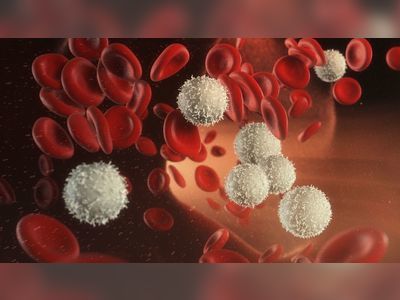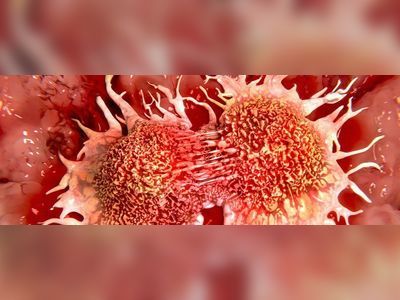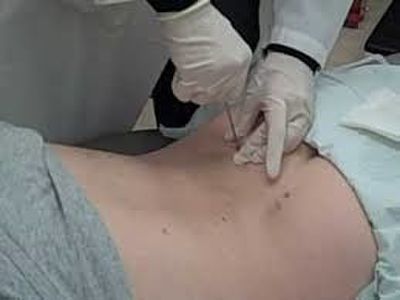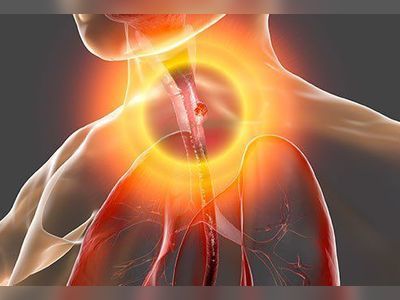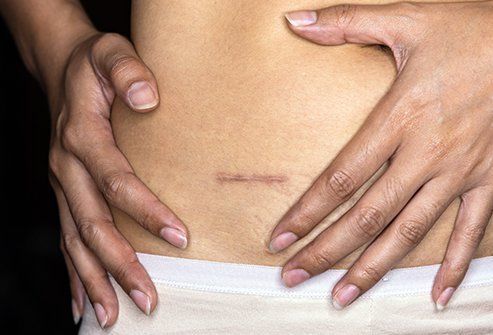
Are Adhesions and Scar Tissue the Same?
Scar tissue is the collection of cells and a protein called collagen at the injury site. Scar forms outside the body on your skin during the healing process of a wound after an injury, fall, or accident. It is a natural healing mechanism. After years of maturation of the scar tissue, symptoms such as pain, tightness, itching, or difficulty in moving the scarred part may appear.
Adhesions are scar tissue inside your body. These are a band of inelastic scar tissues that join or stick two surfaces or two organs to each other. They appear as a thin sheet of tissue similar to a plastic wrap. It is caused due to various reasons such as accident, fall, surgery, infection, inflammation trauma, radiation therapy, or endometriosis (womb tissue growth outside the womb).
Almost everyone develops internal scar tissue or adhesions throughout life, and they can form anywhere in the body after infection, inflammation, surgery, or trauma. It affects several layers of the muscle, tendon, or fascia (band of connective tissue).
Adhesions may occur on the surface of your body organs or deep within them. These adhesions can be filmy or coarse, thick, or thin. They can be small enough to join individual cells, deep inside that organ. They can become large enough to attach structures or organs from neck to waist, bending a person forward.
Adhesions inside your body can join any neighboring organ or structure or distant structure inside your belly most of the times due to previous surgery performed on the pelvis, womb, uterine tubes, or guts. Inside body tissues begin to shrink and pull, resulting in the restriction of movements of that area. It may cause mechanical irritation and form more adhesions.
What are the symptoms of adhesion?
Symptoms of adhesions inside your belly may vary; however, most adhesions do not cause any symptoms. However, it can squeeze the nerves, organs, and joints causing severe internal pain and may hamper the organ functions (dysfunction).
It may give you confusing symptoms of unexplainable severe internal belly pain that may block or distort the organ or stop their functions. For example, pelvic adhesions can spread to bind nearby organs such as the bowel, bladder (urine pouch), uterine tubes, or ovaries. You may have
Severe abdominal pain or cramping.
Nausea.
Vomiting.
Long-term bloating.
Altered bowel habits.
Inability to pass gas.
Constipation.
Infertility.
Pain during urinating.
Pain during sex.
Pain during passing stool.
Pain during menses.
What are the treatment options for adhesions?
Most adhesions do not appear on imaging tests such as X-rays, magnetic resonance imaging, computed tomography scans, or ultrasonography. Therefore, direct visualization during surgery is the only definitive way to diagnose them. All surgeries can cause adhesions. Thus, a conservative approach is required to examine a medical history of healing events to determine the cause of your pain and dysfunction.
Symptomatic treatment: Currently, there are no effective targeted medicinal therapies for adhesions. However, symptomatic treatment can be given to ease the pain, vomiting, and constipation such as a change in diet, painkillers (paracetamol and ibuprofen), stool softeners, etc.
Surgery: Removing the adhesion by surgery will help you to ease this pain and prevent further complications of adhesions.
Lysis of adhesions through laparoscopy (through small keyhole incisions on your belly) or through a large incision.
Surgeries to remove these adhesions can lead to new adhesions that can be a vicious cycle. Even with surgical advancement, the patient and physician cannot prevent the adhesions completely. Despite the best skills of the finest surgeon, our body creates more adhesions to heal injuries even from the surgery that intended to remove them.
What are the complications of adhesions?
Complications include:
Blocking of the uterine tube
Infertility in woman
Bowel obstruction (blocking of the guts that can be fatal)
Pelvic infection
Inflammation of the pelvic organ
Ruptured appendix
Endometriosis (womb tissue growth outside the womb)
Damage to gut






